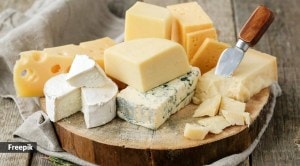- India
- International
Double yield from hybrid wheat turns farmers in Satara district to entrepreneurship
What also motivated the farming community into entrepreneurship was the double yield obtained from the a hybrid wheat variety, MACS 6478, developed by agriculture scientists at Agharkar Research Institute (ARI) in Pune, a few years ago.
 Alongside an enhanced yield, more farmers reported getting better market value for their produce. Last season, a quintal fetched Rs 3,000. (Representational)
Alongside an enhanced yield, more farmers reported getting better market value for their produce. Last season, a quintal fetched Rs 3,000. (Representational)LAST MONTH, Ramesh Jadhav and twelve other farmers from Koregaon taluka in Satara district turned entrepreneurs. They formally registered Deccan KGP, an agro-company, aimed at taking local farm produce directly to big markets.
Farmers of Karnjkhop village grow wheat, jowar, potato, chickpea and flat beans, and are now beginning to dream big by adapting to newer cultivation practices, including in the choice of seed variety.
What also motivated the farming community into entrepreneurship was the double yield obtained from the a hybrid wheat variety, MACS 6478, developed by agriculture scientists at Agharkar Research Institute (ARI) in Pune, a few years ago.
“Earlier, our wheat yield would not be more than 20 quintals per acre. But after we tried MACS 6478 variety, we started obtaining an additional eight to 10 quintals per acre,” said Jadhav, who has been buying these hybrid seeds for five years now.
The North Koregaon belt in the district is known to be semi-arid. A total of over 50 acres in this village, last year, was dedicated to wheat cultivation. But with irrigation requirements for this variety arising only once in eight to 10 days, the farmers now have fewer reasons to worry.

“In our locality, where there are black, brown and other types of soil, each with varying moisture retention capacities, we are required to water the crop once after eight or nine days,” Jadhav said.
According to ARI scientist Ajit Chavan, the hybrid variety showcases uniform growth of up to a height of 78 cm and can mature anytime between 99 to 110 days. This is against the normal maturing attained after 140 to 150 days, required for wheat varieties cultivated commonly in northern India, Chavan added.
Chavan said, “Since winter season in the peninsula is shorter and cold conditions are unlike North India, our effort was to develop a variant that could suit agro-climatic conditions here.”
Jadhav, too, said cooler the weather, better the wheat produce. “At the end of a good winter season, the wheat produce can go up by 20 to 22 quintals per acre,” he said.
Scientists from ARI estimate that wheat produce ranging between 43 to 46 quintals per hectare can be obtained from the MACS 6478 variety.
Alongside an enhanced yield, more farmers reported getting better market value for their produce. Last season, a quintal fetched Rs 3,000.
For Suraj Solasakar, another farmer from Solashi village in Satara, chapatti tasting is an inevitable part of his marketing strategy every time he sets out to sell wheat grown at his farm.
“There is a perception among people that produce from hybrid crop does not taste as good as the natural produce. But when customers taste the soft chapattis prepared from sheta flour of MACS 6478, they are convinced,” said Solasakar, who cultivated wheat over one acre last season.
When it comes to quality standards, too, this variety has earned good scores. On a scale of 10, ARI stated an 8.05 for the chapatti flour and a 6.93 for bread preparation.
Asked about his returns from the season gone by, Solasakar said the bountiful harvest could not be loaded into the truck in one go, thereby spilling away about a quintal at the time of harvest.
“We sold a portion at a good market price. Most of the produce has been preserved and seeds will be distributed among farmers, locally,” he added.
Scientists said they would now focus on further improving the nutritive value of the wheat. The present variety comprises 14 per cent protein, 44.1 ppm zinc along with 42.8 ppm iron.
Click here to join Express Pune WhatsApp channel and get a curated list of our stories
Apr 18: Latest News
- 01
- 02
- 03
- 04
- 05






































